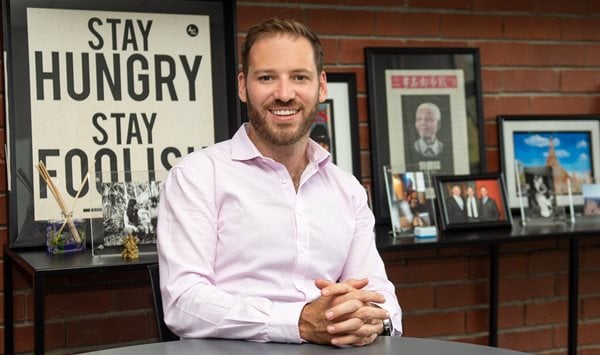As recently as last year, terms like 'evolution' and 'survival of the fittest' were bandied about various boardrooms, airport lounges, strat sessions and team builds like a dingbat on time trials. And then, slam dunk - virus 1, global teams 0. Albeit, for a brief moment.

Michael Smollan, chief growth and innovation officer at Smollan
We were forced to hastily adapt to new patterns in consumer behaviour, get our personal hygiene protocols ship-shape, bring our communities closer and work in a significantly more purpose-driven empathetic way.
E-commerce growth
Factoring in forecasts released recently by Edge by Ascential, the by and large foot-flat growth of e-commerce has seen sales growth fast-forward by more than two years in specifically Asia Pacific along with a slower start in Latin America, the Middle East and Africa regions. The report found that the e-commerce landscape is defined by a few scaled players driving growth, and a huge number of smaller sites seeking to find a differentiated space in some way.
The direct-to consumer (D2C) model is taking root in the e-commerce space and despite sales volumes still being small, offers another layer of opportunity over the long-term in the knowledge that it does not negate the relevance of other trade channels but instead allows for an omnichannel approach to deriving value.
Platforms with manufacturer-to-consumer direct sales allow for deeper brand relationships and a higher degree of data capture. As D2C falls into what is considered a niche retail model, typified by exclusivity and high-consideration categories, legacy brands such as Gillette, Nike and Old Spice are on track in terms of innovating in the D2C space.
Gillette Venus is an example of one of their brands that offer consumers an exclusive razor subscription service through its D2C site. On signing up, shoppers choose a tailored plan for delivery with optional add-ons such as shaving cream. Meanwhile, Unilever Pakistan launched SuperSauda, which offers the full range of Unilever products, with the purpose being to acquire first-party data for the global consumer goods business.
Deriving value from D2C
Being a nimble, relevant, and customer-centric business applying a D2C model selling products directly to the customer allows one to control almost every aspect of the journey. However, it is important, as the Edge report points out that a brand must decide what the purpose of the platform is going to be, how it is going to be differentiated and what problem it is solving for consumers.
The area of value is key with a D2C platform and the need to identify what that is. Take for example Amazon, selling x product with free one-day delivery versus another D2C platform with a rewards programme but seven-day delivery – this may not be a superior offering for consumers.
Social media channels are an efficient way to direct consumers to your platforms by meeting the customer where they are. The appeal of Instagram, with its 1 billion-plus monthly active users, prompted Old Spice to tap in using sponsored posts and Instagram Shops to bring the consumer into the Old Spice D2C store with ‘ahoy matey’ conversations and incentives to identify themselves and ultimately shop. In this way, they're building a direct brand-shopper relationship.
According to recent research that reviewed a category spread of personal care, household care and confectionary and snack products, many manufacturers reserve D2C capabilities for their most well-known brands, with exclusive, premium and luxury products more commonly offered where a brand can provide a tailored online experience. Confectionery and snacks led the pack with the highest proportion of branded sites with D2C capabilities.
PepsiCo launched two D2C websites, www.pantryshop.com and www.snacks.com, as Covid-related panic buying caused a demand for essential products with high levels of out-of-stocks in-stores. M&M's also launched a brand website allowing consumers to purchase directly and offering them the option to personalise the product – from choosing the colour and packaging and being able to add images or text to the treat.
As we begin a new year with an insecure economic outlook, retailers, brands and manufacturers need to refine their values around e-commerce, sustainability and localism as we become more accustomed to shoppers living in smaller footprints on an expansive, inter-connected level. Certainly, the D2C space will be no exception.






























![Today, Halo and Demographica announce a new specialist agency, Second Rodeo]], headed up by Mike Stopforth (left). Dean Oelschig, managing partner and founder of Halo (right) says they will work as a group but ultimately, each agency will be an individual specialist](https://biz-file.com/c/2505/772543-64x64.jpg?2)






